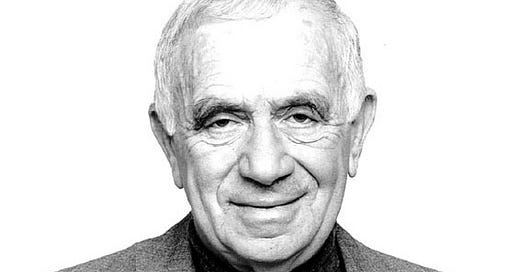In 2000, one year after I arrived in Israel, the Second Intifada erupted. For the next five years, young men and women outfitted in explosive vests stepped into downtown intersections, crowded markets, and public buses, and detonated themselves, killing anyone who happened to be standing nearby. In September 2003, one Hamas suicide bomber carried out his mission at a café around the corner from our apartment. Our building shook. Our ears rang. We comforted three bloody tourists before the ambulances arrived. After their release from the hospital, they carried their trauma back home with them to Australia.
At the time, I was a newcomer to the work of Israeli poet Yehuda Amichai, whose poem, קטר הפצצה - Koter HaPitzatza - The Diameter of the Bomb, spoke directly to me.
The Diameter of the Bomb Translated by Chana Bloch and Stephen Mitchell The diameter of the bomb was thirty centimeters and the diameter of its effective range about seven meters, with four dead and eleven wounded. And around these, in a larger circle of pain and time, two hospitals are scattered and one graveyard. But the young woman who was buried in the city she came from, at a distance of more than a hundred kilometers, enlarges the circle considerably, and the solitary man mourning her death at the distant shores of a country far across the sea includes the entire world in the circle. And I won't even mention the howl of orphans that reaches up to the throne of God and beyond, making a circle with no end and no God.
Ever since the Israel-Hamas War broke out, I have been reflecting on Amichai’s poem. In the early weeks, when the names of Hamas’ victims were released, the poem obviously came to mind. I did not know any of the dead, injured, or kidnapped, but I occupied Amichai’s “larger circle of pain and time.” Two of the murdered kibbutz members were nieces of a friend; one of the free spirits killed at the music festival was the grandson of another.
As our attention moved to the fighting in Gaza, Amichai’s poem again struck a chord. Each night, as I listened to the roar of planes overhead, I could all too easily imagine the ripple effects of their bombs. Tragically in Gaza, “hospitals are scattered.” Undoubtedly, a “howl of orphans” can be heard.
Now, six weeks into this war, a different dynamic has emerged. Pain no longer radiates toward us from distant events, but hits us directly, repeatedly, like the gusts of a local storm intensified by a prevailing wind. It bounds and rebounds across boundaries. It ricochets with pinpoint precision. The spatial quality of our lives has changed.
I’ve tried to capture it here, in a new version, a near inversion, of Amichai’s poem.
Along Longitudinal Lines After Yehuda Amichai After 1,200 people were murdered and 240 were kidnapped, 300,000 people rallied in support of the murderers and kidnappers in a city more than 2,000 miles away. And though a counter-rally was staged not far from there, it drew half that number, and did little to lessen our multiplied pain. Another counter-rally was held from a distance of some 6,000 miles. But by then, a mother and father had traveled here from there to bury their soldier on Herzl’s hill, where the meridians of their grief and of ours converged on half the circle of the Earth.





The Amichai poem is a favorite of mine - that is to say, it's so spot on. It's interesting to read your take on it, given that I've thought of the Amichai poem many times since October 7th.
Just hauntingly beautiful Sheryl. Poetry goes farther into the land of no words, where prose cannot.